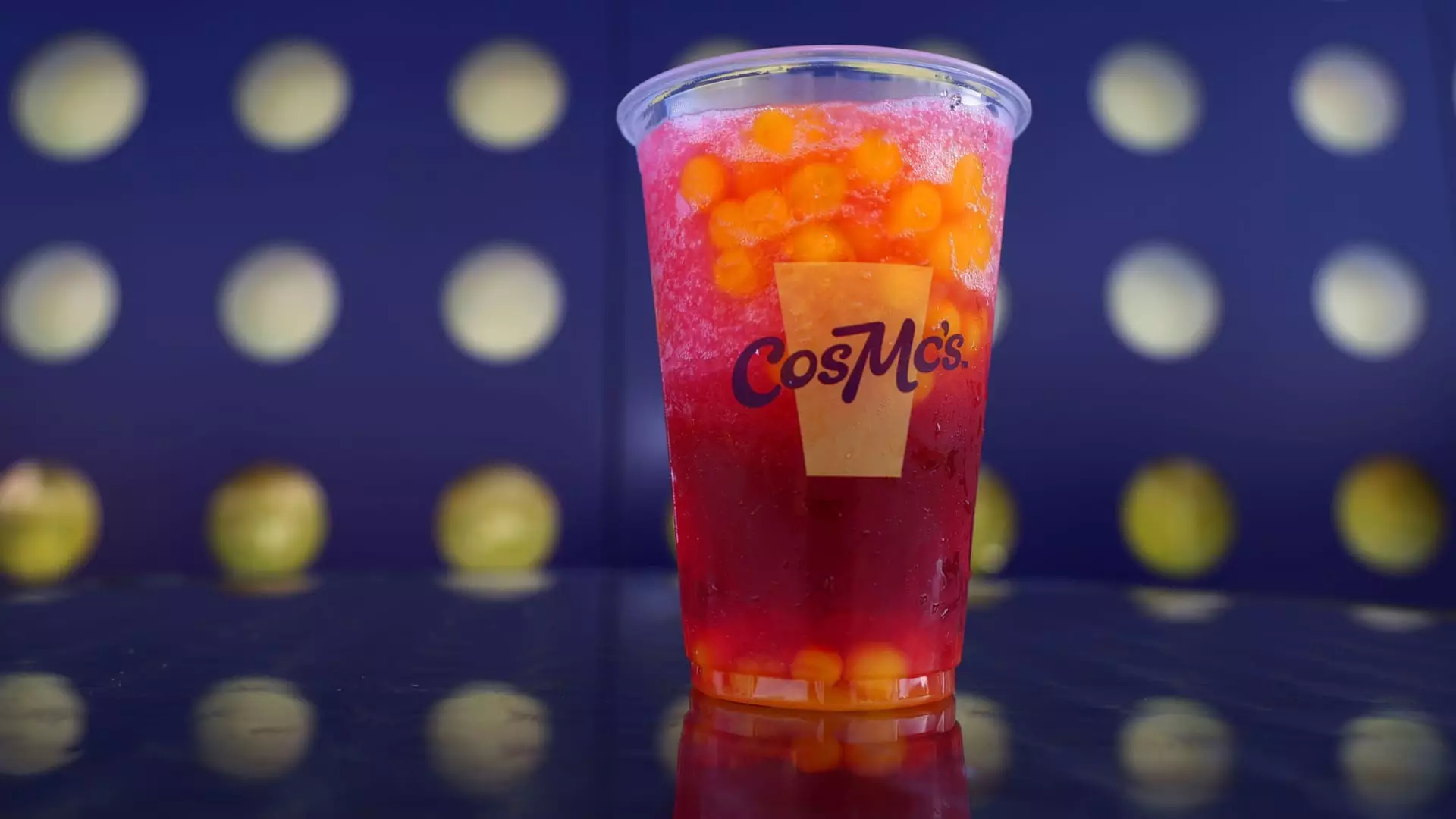Fast-food chains, traditionally defined by their greasy menu items, are pivoting towards an unexpected landscape: beverages that burst with color, flavor, and enthusiasm. This shift is not a mere gimmick; it reflects a deeper understanding of consumer desires, especially among younger generations, whose culinary interests defy traditional norms.
Chains like Chick-fil-A are rolling out quirky concoctions such as seasonal Pineapple Dragonfruit drinks. Meanwhile, Taco Bell’s innovative Live Mas Café concept is transforming how consumers view fast food—it’s no longer just about a desire for cheeseburgers and fries; it’s about crafting an experience centered on delightful drinks. These chains recognize that, for today’s consumers, particularly Gen Z, an Instagram-worthy beverage can supersede an old-fashioned soda in appeal and social significance.
The Sweet Escape from Traditional Soda
As soda consumption has dwindled, chains are arraying their menus with eclectic and exotic flavors. The rise of bubble tea, “dirty sodas,” and refreshers are not just trends but indications of a seismic shift in consumer preferences. Fast-food restaurants are responding to a marketplace that is increasingly exploratory and adventurous, where a drink with a butterfly pea infusion or ube flavoring becomes another way to connect with brand identity.
This transformation suggests a keen understanding of a new consumer ethos. An astute observation from industry consultant Michael Parlapiano stresses this versatility: “We think of it as ‘little treat’ culture.” In this context, beverages serve as affordable indulgences, enticing younger consumers to partake in the novelty of sugary concoctions without guilt.
The Power of Flavor Expansion
Innovation isn’t merely limited to adding colorful syrups; it extends to selecting unanticipated ingredients. Wendy’s recent lemonade offerings feature flavors like blueberry pomegranate and pineapple mango, which have evidently succeeded in capturing consumer interest and loyalty. This enables brands to venture into less familiar territory, expanding their palate and encouraging repeat visits from younger patrons.
What’s fascinating here is the blend of traditional fast-food perception with modern consumer cultural dynamics. For instance, Wendy’s acknowledgment that their lemonades resonate particularly well with Hispanic consumers underscores an intersection of marketing and cultural awareness. This is a noteworthy departure from older fast-food strategies, where one flavor profile was expected to appeal generically to a mass audience.
Beverages as Profit Engines
From a fiscal perspective, beverages carry a strategic advantage that is hard to ignore. Margins on drinks tend to be higher compared to food items, and their relatively straightforward preparation process allows for expanded offerings without significant operational overhead. This meticulous approach to profit generation has led several chains to realize the importance of drinks—a fact emphasized by El Pollo Loco’s CEO, who reiterated, “it’s not just about carbonated sodas anymore.”
As quick-service restaurants reevaluate their menus, the emphasis is clear: beverages are no longer sidelined options; they are now core components of the business model, capable of driving substantial growth. Each new drink introduced on the menu is not just an addition; it represents a calculated investment in profitability and customer engagement.
Gen Z and the Quest for Unique Experiences
Younger consumers are not only receptive to unique flavors but actively hunt for them. Fast-food chains are leaning into this by introducing customizable offerings—ranging from poppin’ boba in drinks at McDonald’s CosMc’s to troll-worthy drinks at Shake Shack. These innovations tap into Gen Z’s proclivity for experiences that are shareable on social media, wherein taste and aesthetics combine to enhance their dining experience.
Claire Conaghan, a trendologist at Datassential, aptly summarizes this ethos, asserting that Gen Z is aware of the sugar content but sees these beverages as guilty pleasures. The implication is potent; fast-food chains are no longer competing merely for stomach space but for emotional connections, favoring unique and personalized experiences that fuel loyal patronage.
Learning from the Landscape
As fast-food chains like Taco Bell harness the momentum from their innovative beverage concepts, the industry is entering a renaissance of sorts. With aspirations to expand their beverage lines to a $5 billion business by 2030, Taco Bell’s future appears aligned with leveraging learnings from experiential frameworks such as the Live Mas Café. Through strategic experimentation, they are asserting their place in an ever-changing landscape of consumer preferences.
It’s clear that the primary focus for many chains lies not just in filling bellies but in fostering community engagement and brand loyalty through drinks that excite the imagination. This evolving approach offers a thrilling glimpse into how fast-food companies are redefining themselves in an era where beverages may soon win the culinary crown.

